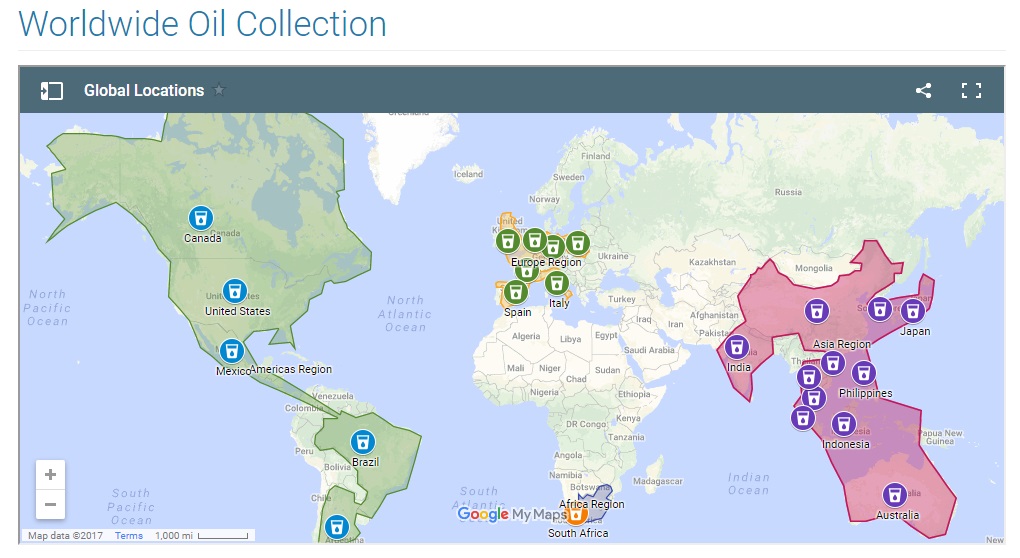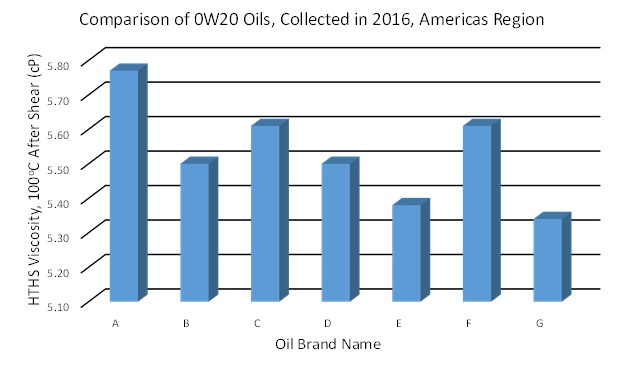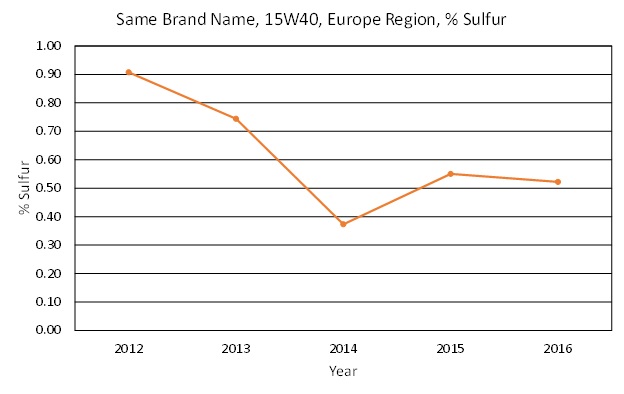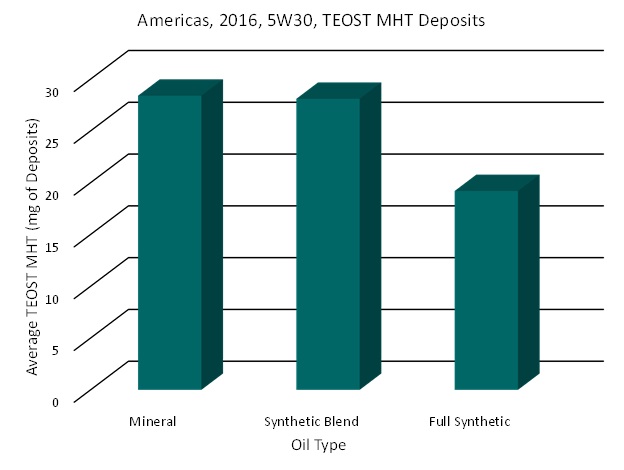Savant, Inc.
Institute of Materials: Engine Oil Data - Just a Click Away!
By Norm Kanar, nkanar@savantgroup.com | TLT CMF Plus November 2017
Project Scenario
“Benchmark OUR engine oils vs. the competition” – it’s your new assignment, and the report is due by the end of the week to be included in your Boss’ presentation to the company’s executive team. The deadline is too soon to collect the oils, much less complete any of the relevant testing. A call to the Lab Manager reveals that some data exists, but OUR samples were concept research formulations, the competition oil tested was from 2013, several key properties are missing data, and a lack of context on goals of the projects that generated the in-house data, cause you to search for an alternative.
The alternative you are seeking can be found at
InstituteofMaterials.com.
The Institute of Materials (IOM) has been collecting and testing engine oils since 1984 when IOM responded to an industry need for unbiased oil data from the market. Since then, IOM has published testing data on over 18,000 oils collected from around the globe.
Each year, IOM collects from twenty-four countries (see
Figure 1) approximately 650 engine oils from store shelves where consumers buy their engine oils. The collected oils are blind-coded to avoid any brand perception bias and then tested with an extensive slate of over thirty industry standard bench tests. The IOM test slate includes kinematic viscosity, High-Temperature High-Shear viscosity (HTHS) before and after shear, a low-temperature viscosity curve, oxidation, deposit tests, volatility, chemical tests, elemental analysis, foaming characteristics, and many more. Re-testing is conducted on any samples which fall out of specification. Both original and re-run results are reported for data confirmation. Randomly selected tests are repeated to confirm the results. The data is also cross-checked vs. industry specifications and reviewed by industry experts before publishing data to the IOM website on an annual basis.
 Figure 1. A map of the annual worldwide engine oil collection completed by IOM.
Figure 1. A map of the annual worldwide engine oil collection completed by IOM.
The recently updated IOM website,
InstituteofMaterials.com allows 24/7 access to browse thousands of engine oils collected from the marketplace. Data sets collected from the Americas, Asia-Pacific (including Australia and India), Africa, and European regions for any year back to 2005 can be purchased online as
Regional Databases. The IOM database website can also be used to purchase
Custom Datasets that can be filtered by year, brand name, supplier, SAE Grade, service class, oil type (mineral or synthetic), engine type (gasoline or diesel), country, or region. Multiple devices such as phones and tablets can now be used to access and order IOM data from across the globe.
The IOM engine oil data has numerous uses including:
•
Comparing crucial competitor properties
•
Auditing blend consistency
•
Monitoring formulation changes
•
Assessing oil quality in the marketplace
•
Discovering trends in technology
•
Comparing oil types
•
Using the data for technical or marketing presentations
In this article, we will spotlight three of these uses: Comparing crucial competitor properties, Monitoring formulation changes, and Comparing oil types.
Comparing Crucial Competitor Properties
Fuel economy has been a concern since automotive vehicles became the mode of public transportation. Today, with the growth of personal transportation at all levels of human activity, fuel economy is even more of a matter of concern for the millions of automobile owners and users everywhere in the world. Engine oil formulators seek out unbiased assessments of the fuel economy dynamics of their oil formulations. The Institute of Materials database contains detailed information on the viscosity dynamics of each oil collected both before and after exposure to the rigors of the ASTM D6278 Kurt Orbahn shear stability test. Subscribers to the IOM database can create a graph like
Figure 2 to compare engine oil formulations. In this example, the IOM data is filtered to SAE 0W-20 oils, collected in 2016 in the Americas Region, and selected brand names of interest to populate the X-axis. The high temperature high shear-rate viscosity at 100oC tested after a high shear Kurt Orbahn test is plotted on Y-axis. Such information would be useful in comparing the oil formulations’ ability to retain viscosity and its VI improver effectiveness in the high temperature high shear-rate environment found in modern engines. Post shear stability test oil viscosity information can be compared to the pre-shear stability test viscosities to evaluate temporary and permanent viscosity loss parameters to gain insights on the performance of the viscosity modifiers present in each oil formulation.
 Figure 2. An example of a chart created from IOM data to compare a crucial engine oil performance property.
Monitoring Formulation Changes
Figure 2. An example of a chart created from IOM data to compare a crucial engine oil performance property.
Monitoring Formulation Changes
IOM has collected engine oils for over thirty years with consistent testing performed on each sample. The IOM database provides the data for determining how a formulation has changed over time in response to market needs. Established brand names in popular SAE viscosity grades are often collected in the same region several years in a row. An example of such formulation monitoring is found in
Figure 3. The IOM data is filtered to SAE 15W-40 oils, collected between 2012 and 2016 in the European Region, and then a specific brand name of interest is selected to populate the X-axis. The percent sulfur content is plotted on Y-axis. Sulfur content of lubricating engine oils is a specification requirement for API CK / FA-4, ACEA E6-16, and ACEA E9-16 specifications. The IOM data displayed in
Figure 3 seem to confirm that this brand formulation has reduced the sulfur content over the last five years. The IOM database includes demographic information like the specifications that are claimed on the bottle; and includes pictures of the front and back of the original package. Such demographic information combined with the testing data would be crucial to determining if a given brand formulation indeed met the bench test requirements for the service categories claimed on the package.
 Figure 3. An example of a chart created from IOM data to monitor an engine oil formulation changes over time.
Comparing Oil Types
Figure 3. An example of a chart created from IOM data to monitor an engine oil formulation changes over time.
Comparing Oil Types
Comparing the properties of conventional mineral oils to synthetic engine oils is complex. A recent study by the AAA Automotive Engineering Group used several bench tests to compare the properties for oil brands that offered an SAE 5W-20 engine oil in both conventional and full synthetic formulations. A similar comparison could be performed using the data reported within the IOM database, either across a geographic region or country with dozens of oils selected or at the supplier or brand level with only a few oils. An example of performing a property analysis at a regional level is shown in
Figure 4. The IOM database is filtered to SAE 5W-30 oils collected in 2016 in the Americas Region and then subdivided by oil type, mineral, synthetic blend, and synthetic to populate the X-axis. The average result in mg of deposits for the Thermo-oxidation Engine Oil Simulation Test, (ASTM D7097 or TEOST MHT) is plotted on Y-axis for each of the oil types. The TEOST MHT test models the piston ring-belt deposit formation and was developed to correlate to the Peugeot TU3M High-Temperature engine test. The average deposit level for the mineral and synthetic blend oil types are very similar, perhaps suggesting that the majority content of the synthetic blend is conventional. The average level of TEOST MHT deposits for the full synthetic oil type is approximately 35% lower than the average for the mineral oils collected by IOM in the Americas region in 2016. The extensive data in the IOM database makes it easy for the subscriber to make comparisons between oil types on most of the important performance parameters for engine oils of today.
 Figure 4. An example of a chart created from IOM data to compare oil types for an important engine oil property.
Conclusion
Figure 4. An example of a chart created from IOM data to compare oil types for an important engine oil property.
Conclusion
Your report was completed in plenty of time for presentation at the executive meeting and sparked a very productive discussion within that team. The fact that the data used for the oil comparisons came from an unbiased, blind-coded and consistent testing source really helped your Boss’ credibility, a fact that won’t be forgotten at your next performance evaluation. The IOM data continues to be useful whenever a data-driven analysis of engine oils in the global marketplace is needed.
Investigate the possibilities at
InstituteofMaterials.com.